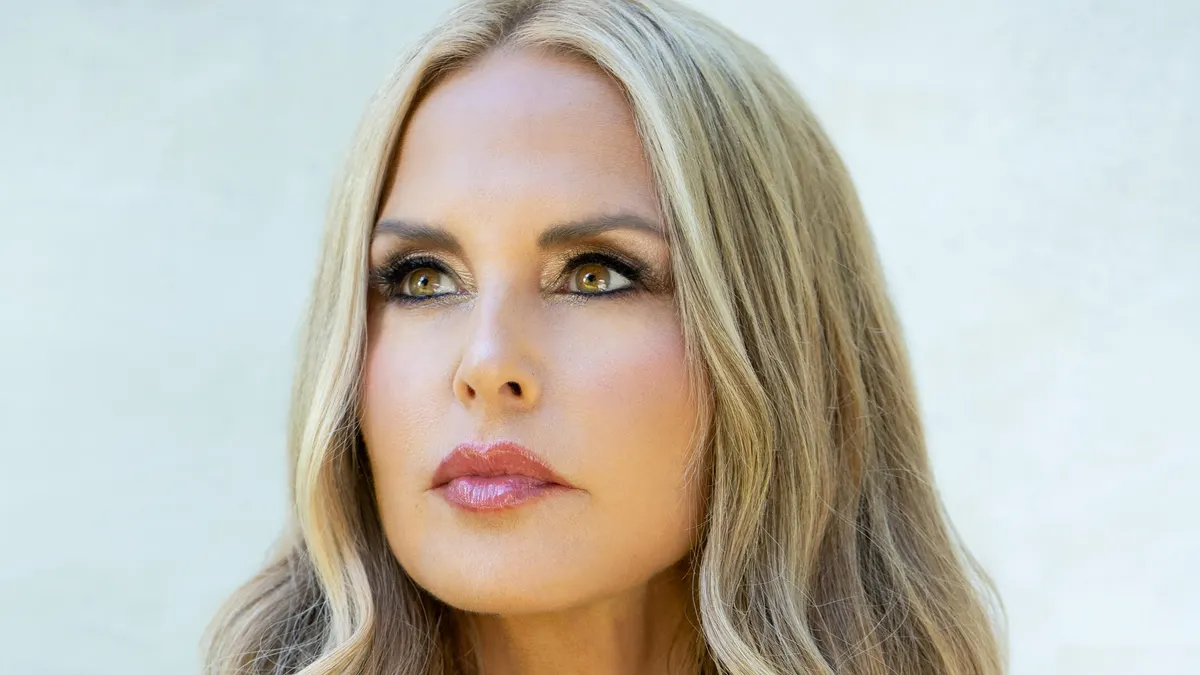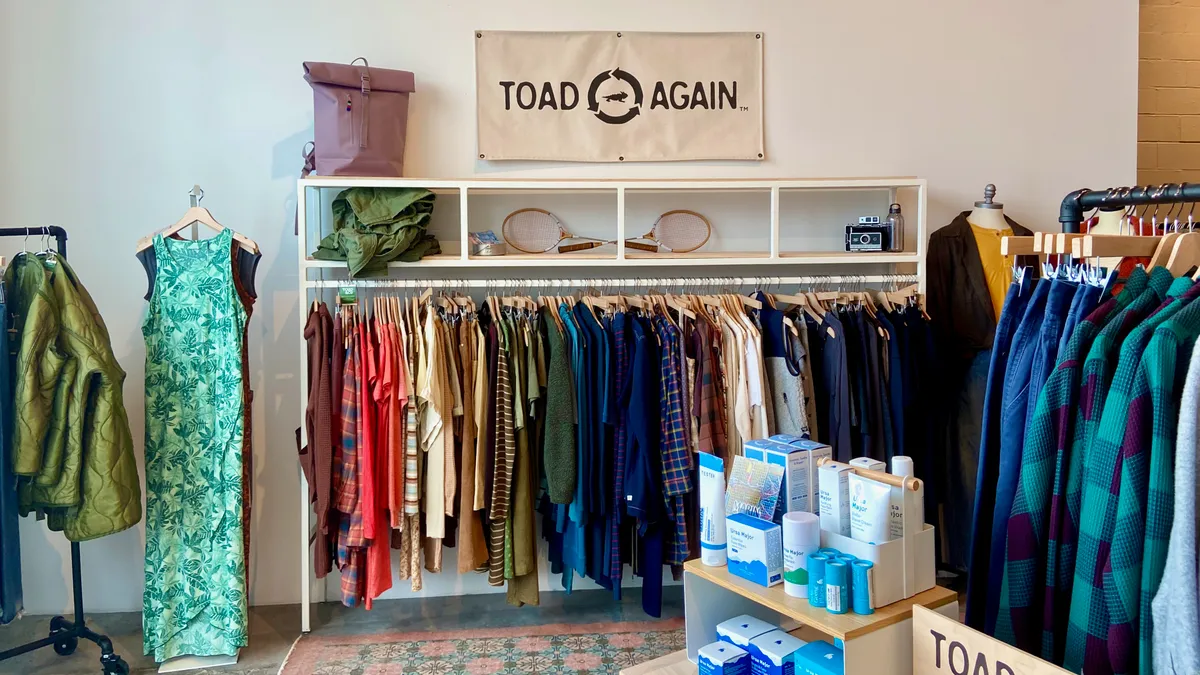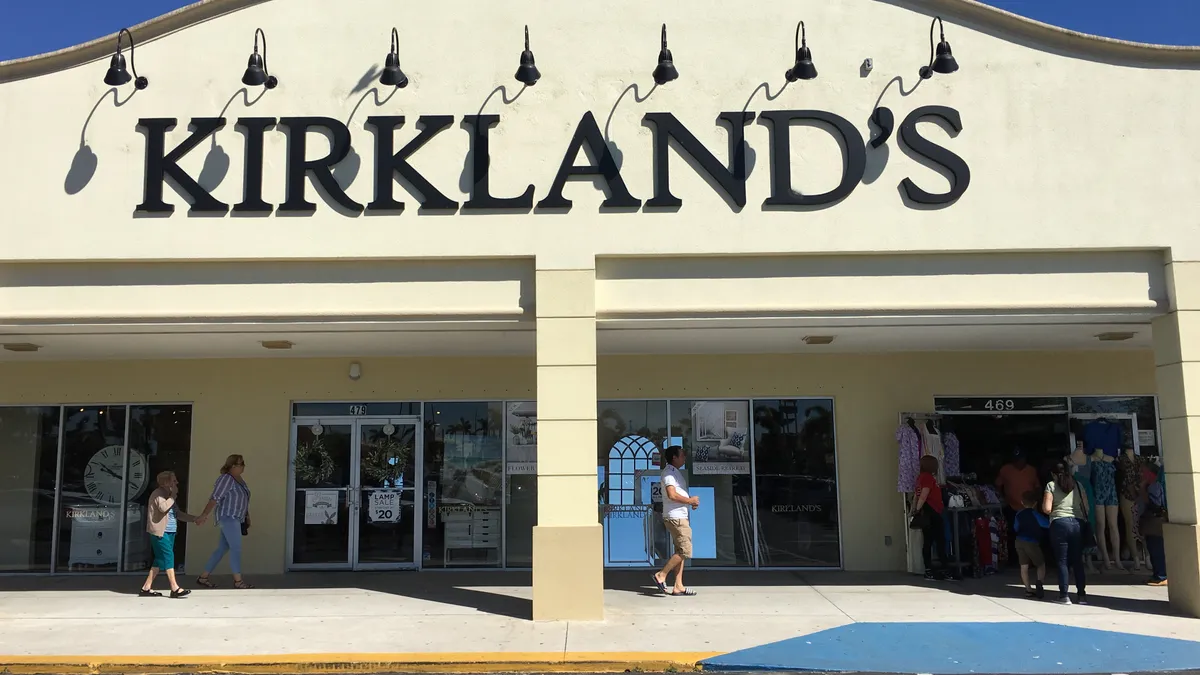Unseasonably cold weather, fashion missteps and increased shipping costs are among the factors bedeviling specialty retailers and taking some steam out of their spring quarters. Many are operating too many stores, and closures took a bite out of their comps, even as e-commerce sales are rising for most.
The uncertainty around tariffs is inviting mostly questions for the moment, though several retailers have responded by diversifying their manufacturing geographies. While that might help blunt the effect of tariffs, they could also invite unintended consequences including quality problems, slower supply chains and, eventually, rising costs, Susquehanna Financial Group analyst Sam Poser warned in a June 5 note on the apparel and footwear markets emailed to Retail Dive.
Not everyone is suffering, even in the troubled apparel market. But with signs emerging of subdued consumer interest in making discretionary purchases, specialty retailers already grappling with multifaceted challenges might have more to contend with as they prep for the back-to-school and holiday seasons. We took a look at a few.
Abercrombie & Fitch
The teen apparel retailer's store closures are hurting sales, which were essentially flat year over year at $734 million (from last year's $731 million), but some analysts see that as a necessary move to continue its ongoing improvements. The company said that three more locations — its SoHo Hollister store in New York, and Abercrombie stores in Fukuoka, Japan and Milan — were added to plans for up to 40 closures this year.
As at Gap Inc., Abercrombie & Fitch is seeing its lower-priced Hollister brand buoy its overall results. That continued into the first quarter as comps rose 1% overall and at the flagship, but 2% at the surf brand. On a conference call with analysts, executives attributed the slowdown at its flagship to wider challenges in retail, in contrast to many retailers of late that have blamed unfavorable weather for weaker-than-expected results.
The retailer's operating loss margin improved 210 basis points year over year to 3.7%, and net loss narrowed to $19.2 million from the $42.5 million net loss of a year ago.
"[T]the improvement at A&F should not be overlooked and continues to display greater overall control of the model," William Blair analyst Dylan Carden wrote in comments emailed to Retail Dive. "We remain confident in longer-term sales and margin targets laid out at the April 2018 analyst day." Executives on the call reiterated that includes fueling top-line growth and expanding margins.
American Eagle Outfitters
While multi-brand companies wrestle with sometimes unwieldy portfolios or new brands that cannibalize the flagships, American Eagle has landed in a sweet spot. Its lingerie brand Aerie, where comps in the quarter rose 14%, is resonating with shoppers of all ages and spiking sales in flagship stores, where comps rose 4% — helping move the company to a record $886 million in net sales, an 8% boost (or $63 million) and an overall 6% comp boost.
Gross margin took a little bruising, down slightly to 36.7% from 37% last year due to markdowns and delivery expense, and net income of $40.8 million was 4.6% of revenue. In the year-ago quarter, net income of $39.9 million reflected 4.8% of revenue, the company said.
The retailer is conducting a cautious brick-and-mortar expansion that executives described to analysts as "patient and prudent," noting that they seek only desirable mall locations and won't settle for less. In the reported quarter, the company opened seven American Eagle stores and closed five, and now runs 936 flagships and 119 Aerie standalone stores.
The teen retailer noted strength in its denim business as well, and executives seem excited for the upcoming back-to-school season. "The product we make today is the best product we've ever made," CEO Jay Schottenstein told analysts.
Chico's FAS
It's easy to see why Chico's in April launched a millennial-focused lingerie brand online — that's where a lot of disruption in that market is taking place and the category represents the conglomerate's best showing. Comps at the company's Soma lingerie brand (favored by older shoppers) rose 3.4%, but at flagship Chico's, comps fell 7.8%; at White House Black Market fell 10% and overall fell 7%.
Spring's chill extended to the company's C-suite. Also in April, Shelley Broader resigned from her roles as CEO, president and member of the board. She was replaced in the interim with Bonnie Brooks, formerly vice chair, president and CEO of Hudson's Bay Company and a Chico's FAS board member. In March, the apparel company brought on former Nordstrom Rack President Karen McKibbin to lead the Chico's brand, replacing Diane Ellis, who left in November.
Private equity firm Sycamore Partners fired off two bids for the company in May, which Chico's rebuffed. In her statement Tuesday, Brooks said the company is set to make the right moves under new leadership and touted her own experience at righting the ship in apparel retail.
The company is contributing to the massive brick-and-mortar contraction seen already this year. First quarter net sales fell 7.8% to $517.7 million from $561.8 million last year, in part due to 41 net store closures since the year-ago quarter. Plans announced in January are for shuttering 250 stores over three years, and the company has already closed 100 stores (6.6% of its fleet) in the past three years, according to financial data firm Thinkum.
Gap Inc.
Gap got some frosty feedback after reporting a 2% first quarter net sales decline to $3.7 billion that included an uncharacteristic 1% comp decrease at Old Navy. The 10% comp tumble at flagship Gap and the 3% drop at Banana Republic were worse, but Old Navy's softness was a surprise.
That led analysts to challenge executives about the wisdom of their plans to spin off the budget brand. One issue on analysts' minds is whether Old Navy might suffer once it's severed from the conglomerate's supply chain efficiencies. But CEO Art Peck and CFO Teri List-Stoll pushed back, with Peck insisting that the company would never do anything that would imperil either brand. "I think it would be profoundly short-sighted to question the wisdom of the separation on the basis of a very very unusual quarter," he said on the call, adding, "Consumers don't change their spending patterns overnight. This is eminently explainable."
Neil Saunders, managing director of GlobalData Retail, in his own emailed comments said it would be bad for both brands.
"[W]hen the business is split, Gap's lackluster performance will be more exposed than ever. If the brand continues on its current trajectory — and there is no evidence to suggest it won't — it is difficult to believe it has a sustainable future," he said.
Gross profit in the quarter fell 6% year over year to $1.34 billion, as gross margin contracted year over year by 140 basis points to 36.3%. But net income rose to $227 million from last year's $164 million, and operating margin expanded by 240 basis points to 8.5%.
J. Jill
Women's apparel retailer J. Jill froze out some of its most loyal customers with fashion missteps, but that means its troubles are correctable, according to CEO Linda Heasley.
The company has shifted to a more balanced and seasonal, rather than monthly, approach to colors, and brought back textures, embroidery and other details. "Our customer loves color. ... She is looking for that pop of color," Heasley said. "She is looking for those tassels. We have to be careful with that because she doesn't want it to be too fussy, but she really appreciates those details."
It made for a bleak report: First quarter net sales fell to $176.5 million from $181.5 million in the year-ago quarter as total comparable sales, (in-stores combined with direct-to-consumer sales) fell by 3.3%, although direct-to-consumer net sales were 41.9% of total net sales, up from 40.5% in the year-ago quarter.
Gross profit also fell, to $116.3 million year over year, from $120.3 million, and net income plunged to $4.4 million from $11.3 million in the year-ago quarter. Gross margin shrank to 65.9% from 66.3% a year ago.
The company was left with more inventory than it anticipated, rising to $85.4 million at the end of the quarter from $77.5 million at the same time last year. "With the missteps we had this quarter ... it got ahead of us," Heasley told analysts, noting that the situation forced markdowns. "The customer voted against the product line in addition to the very cool, unseasonably cool spring weather that we had."
Express
Despite some dire-sounding results, Express managed to beat expectations in the quarter. Net sales fell 6% to $451.3 million, and the company swung to a loss of $9.9 million from the year-ago period's net income of $0.5 million, according to a company press release. Gross margin fell 280 basis points to 27.1%, driven by a 100 basis point decrease in merchandise margin and some cost increases.
The company did have some good news: It's tapped a seasoned retail professional to be its new chief executive, former Delta Galil Premium Brands CEO Timothy Baxter. But there may be more trouble ahead because some of the apparel retailer's usual strengths, like tops, are off their game, according to a note from MKM Partners Managing Director Roxanne Meyer emailed to Retail Dive.
"While we are encouraged by the hiring of Tim Baxter as CEO, who comes to Express with a deep merchant background and experience with contemporary brands and with integrating stores and e-commerce, it could take several quarters (or more) for his impact to be felt on product, while addressing customer acquisition could take longer," Meyer wrote. The company could be especially vulnerable to potentially escalating tariffs on Chinese goods, she also warned.
Ahead of Baxter's arrival, the retailer is pruning its assortment, with plans to exit swim and watches, executives said on a call with analysts, according to a transcript from Seeking Alpha. The company runs 430 stores plus 199 outlets and plans to shutter 11 full-line stores this year, according to its release.
Meyer hailed the merchandising changes as positive and noted that additional closures are likely. "Bottom line - [Express]'s old approach to addressing lifestyle has not been effective, in our view," she wrote.
Michaels
Michaels faced customer resistance to new coupon policies after it attempted to replace those discounts with everyday low prices, and interim CEO Mark Cosby told analysts that contributed to sales softness in the quarter. Sales reached just $1 billion compared to last year's $1.2 billion as comps fell 2.9% and adjusted EBITDA contracted to $140 million from the year-ago quarter's $167 million, according to a company press release.
The retailer responded to customer complaints by eliminating the low prices approach and easing up on visual merchandising of more expensive items. "While many of these changes were made in the last 60 days, we have already seen a reduction in customer complaints, and we are encouraged by recent sales trends," he said, according to a Seeking Alpha transcript. "The erosion of our value perception didn't happen overnight, and we know it will take time to win back the confidence of our customers, but we are confident that the steps we are taking to stabilize and improve our value perception will contribute to better performance in Q2 and the second half of 2019."
But the arts and crafts retailer may have bigger problems looming if tariffs on Chinese imports continue, according to Telsey Advisory Group analyst Cristina Fernández. "[I]f tariffs on List 4 are implemented, Michaels has meaningful incremental exposure with the majority of its private label product (60% of sales) imported from China," she wrote in comments emailed to Retail Dive. "As a result, we believe it is prudent to take a more cautious approach to earnings and the stock's valuation."
Designer Brands (formerly DSW)
Intemperate spring weather should have hurt DSW, now known as Designer Brands Inc., a lot, leaving summer merchandise like sandals on its shelves, but the retailer had a good quarter despite those challenges.
Comps were up 3% year over year, helping drive a net sales rise of 23.4% to $878.5 million. Reported gross profit as a percent of sales expanded by 50 basis points due to margin expansion in the U.S. retail segment and the exit of Ebuys during the previous year, partially offset by lower wholesale margins. Net income reached $31.2 million from last year quarter's $24.3 million. The footwear retailer is among the few adding stores, bringing on 143 year over year for a total of 660.
"We had a strong start to the year, delivering double-digit increases in both revenue and earnings as we start to demonstrate the power of an integrated global Designer Brands Inc.," CEO Roger Rawlins said in a statement. "The quarter saw strength across the board — with growth in key operating metrics, segments, and geographies."
DSW has got a grip on inventory and costs, "and, more broadly, better utilization of its fleet," according to a note from William Blair analyst Dylan Carden emailed to Retail Dive. "Combined with an industry-leading 27 million loyalty member program, and 500-plus retail locations some 20 minutes from 70% of the U.S. population, we believe DSW is in an altogether enviable position amid a consolidating footwear industry," he also wrote.
Rawlins counted its investment in the Camuto Group footwear conglomerate last year among its triumphs, according a transcript of the conference call with analysts from Seeking Alpha. That had invited warnings from some analysts of near-term uncertainties, and Carden suggested that his confidence is justified.
"[M]anagement is sounding an incrementally more confident tone around integration of the Vince Camuto business, including offering compelling scenarios around loss and write-down avoidance through better utilization of DSW retail locations to clear slow-moving wholesale inventory, while offering trend analysis to these same partners, and more broadly facilitating greater flexibility for DSW at higher margins," he said. "We believe these early data points can shift the narrative away from misplaced concern of wholesale partner response to DSW ownership of the Camuto brand."






















